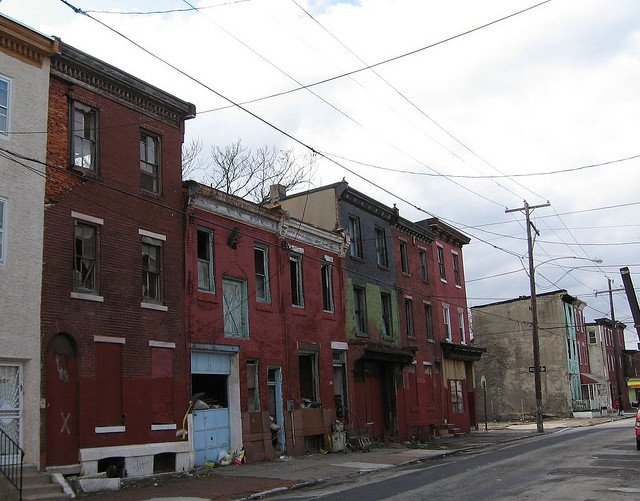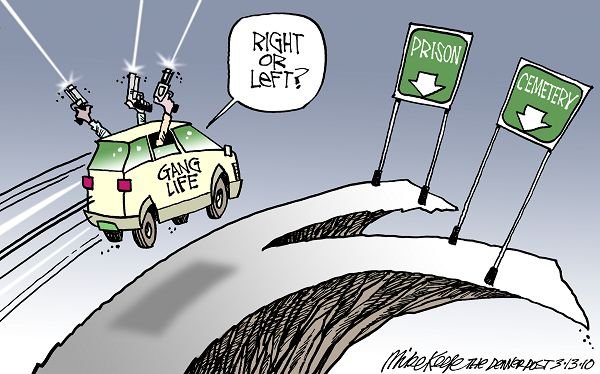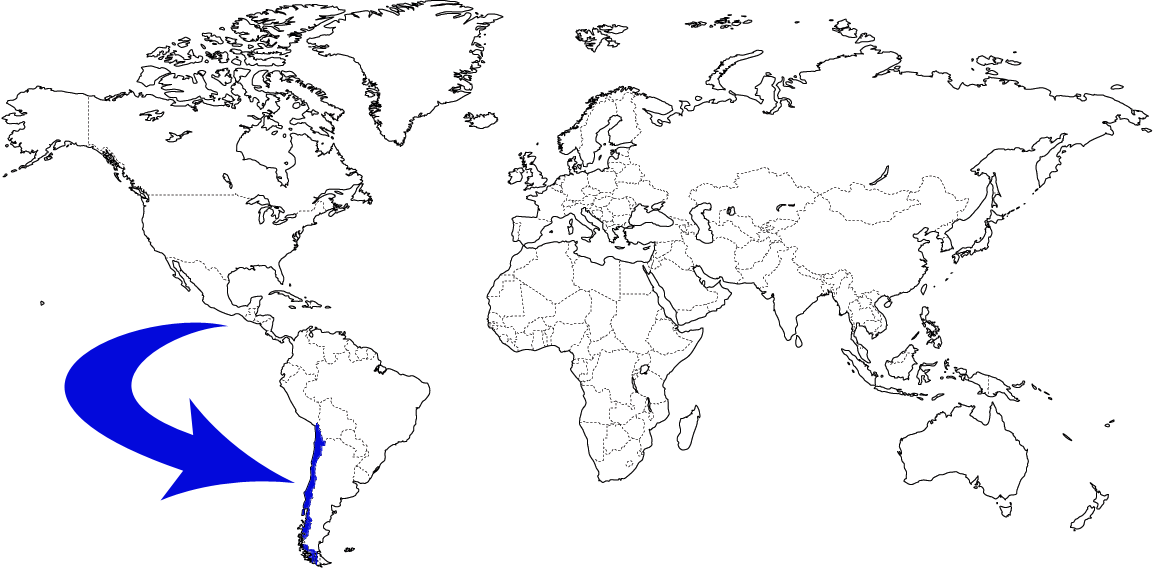This research was adapted from a paper called “Crime in neighborhoods: Evidence from Santiago, Chile”, Crime Prevention and Community Safety (CPCS) 16(3), 205–226, 2014. Written by me and Mauricio Olavarria (https://www.researchgate.net/profile/Mauricio_Olavarria-Gambi)

The analysis of the spatial distribution of crime tries to explain why in some urban territories there is a greater concentration of criminal activity than in others. Studies on crime in small territorial units in the USA began in the 1930s, and recent decades have seen renewed interest in studying the so called ecology of crime.

The ecological perspective on crime suggests that there are multiple factors that converge for the occurrence of criminal and violent events, such as individual factors (biological and sociodemographic), relational factors (relations with peers, friends, neighbors and family), community factors (the context in which social relations are embedded) and societal factors (such as culture and norms of behavior). Thus, studies of this type have addressed issues such as social disadvantages; disorder and physical deterioration of houses, facilities and routes of the territory; and the processes and interactions taking place in the neighborhoods.

The analyses that emphasize the concentration of social disadvantages have paid attention to variables such as educational achievement and situations that identify human, social and labor precariousness. Within this framework, crime hot spots (places with concentration of crimes) and places related to behavioral problems are characterized by the convergence of multiple forms of disadvantage, such as poverty, racial isolation, single parent homes, dropping out of school, higher infant mortality levels and child abuse, unemployment, low income and dependence on government aid, disability, precarious housing, and drug consumption. Additionally when there is a proliferation of families at high social risk in urban communities (neighborhoods), a spiral of crime and fear of crime emerges that leads for example to greater loss of Jobs.

Emphasis on social disorder and physical deterioration has its origin in the experiment of Phillip Zimbardo,
In 1969 the team lead by Phillip Zimbardo abandoned a car unlocked and without license plates in the streets of the Bronx neighborhood in New York. A car of the same make and similar condition was also abandoned in the streets of Palo Alto, California. The car abandoned in the Bronx was ransacked in a few minutes and within 1 week had been completely destroyed. The car abandoned in Palo Alto did not suffer any robbery in 1 week and the neighbors reported the abandoned car to the police. After Zimbardo damaged with a hammer the car abandoned in Palo Alto, it had the same fate as that in the Bronx (for more details see, for example; Tatum, 2013).

Formalized in the broken windows theory (Wilson and Kelling,1982; Kelling and Coles, 1996). According to this theory, factors such as the broken windows of a car or building, graffiti, or accumulation of trash in the street would lead to further window breaking, graffiti and accumulation of trash (minor vandalism acts).

Thus, the visual message that the community is out of control would attract the commission of more serious crimes (Sherman, 1998). Zimbardo (2013) argues that some environments would stimulate a sense of anonymity, contributing to minority groups (invisible men and women) becoming potential vandals and perpetrators of criminal acts against property and persons. (Some critics say that this theory criminalised poverty)

The perspective that stresses the importance of neighborhood processes argues that crime rates are associated with neighborhood links and interaction patterns, with social cohesion and informal social control, with the institutional resources of the neighborhood, and with the patterns of routine activities. In this sense, one of the preventive factors of crime would be the ‘collective efficacy of the neighborhood’ (Sampson et al, 2002), which is a composite of the trust existing among the neighbors and the shared will to participate for public welfare of territory close to home.
The role that would be played by the so called ‘oppositional subcultures’ could be and important factor too. Which would arise from the lack of participation of some people in the mainstream of the economic system and social life, and also associated with some kind of social rejection of some communities. All of this could lead some members of those communities to reject the common values and aspirations of society, developing those ‘oppositional subcultures’.

The efforts to gain respect in the context of these ‘oppositional subcultures’ would tend to rely more on violence than on other factors. These territorial spaces would place children at high crime risk because there would be a weakening of the community’s ability to provide a network of adults that would exert informal social control on the children based on values and aspirations globally accepted by society. Public policies may have contributed to the consolidation of these subcultures through practices of housing segregation and the concentration of groups at social risk.
Viewed from this perspective, what the analysis of crime centered on ecological aspects suggests is that, taken holistically, the convergence of social disadvantages, expressions of disorder and weakening of social control mechanisms in the same territorial context would tend to concentrate and produce expressions of violence and crime.

In the Chilean case, Lunecke and Ruíz (2006) identify physical-spatial, economic, social and cultural dimensions present in the ‘critical neighborhoods’ in matters of crime and violence. The first dimension refers to the physical and urban characteristics of localities where criminal and violent events occur persistently, while the second dimension considers the prevailing socioeconomic conditions in the neighborhood. The social dimension refers to the social links and connections that occur in those ‘critical neighborhoods’, while the cultural dimension relates to norms and values present in the neighborhood.
In a study of vulnerable neighborhoods in Santiago, Chile, Candina (2003) identified an association between social disadvantages, low levels of social organization, weakening or lack of informal social control mechanisms, increasing presence of drug dealers, and concentration of crimes and violence.
In this sense, the study of Olavarria and Allende (2014) has also shown that the concentration of social disadvantages in the neighborhood is a predictor of a greater likelihood of the occurrence of crime at the micro-territory level.
In turn, the study has also shown that neighborhood characteristics influence the occurrence of crime through the images they generate to potential perpetrators. This is coincident with Brantingham et al’s (2012, p. 855) claim that ‘abandoned spaces such as buildings or vacant lots may provide cover for the gang (illegal activity)’.

Following Zimbardo, good maintenance conditions would send signals that the residents take care of their micro-territory and the opposite message would be sent in the case of deteriorated or abandoned houses and cars.

A surprising result obtained by Olavarria and Allende (2014) was the lower levels of crime in places with shoes hanging from wires, drug selling and existence of graffiti may be interpreted as the presence of gangs acting in the micro-territory, imposing a certain functional order to their ends of developing illegal activities but not to the rule of law. According to Brantingham et al (2012, p. 854), ‘gang members congregate for social and economic purposes and need an identifiable space for this activity’. Thus, an environment of violence or generalized crime may drive away potential clients and attract police intervention, which would be detrimental to the gang purpose of dominating a territory to conduct their illegal business. Therefore, gangs would manage to keep those micro-territories in order.
The evidence show that, in poor neighborhoods of Santiago gangs carry out social control actions that include intimidation of the population, generation of protection networks for drug trafficking, recruit- ment of youth and children, infiltration of community organizations, and control of common areas (Nespolo, 2011). This reality makes these groups show a behavior of accommodation of the social control actions exerted by the gangs. The same study also shows that in the neighborhoods of low middle income sectors, neighbors develop behaviors of negotiation and dialog with gang members, which gives them a certain level of acceptable security that Nespolo has called ‘security unsecure’.

Finally, the literature show a negative relation of variables representing the existence of parks, sports areas as well as good physical conditions of neighborhoods and houses with crimes that could be interpreted using two dimensions: on one hand, they generate greater levels of well-being to the community members, opportunities for interaction and arousal of trust among neighbors, and on the other the neighborhoods where these kinds of spaces exist belong to the richer people places, which have the resources to create them and maintain them, and also to have citizen security systems that generate extensive and intensive vigilance action. Both interpretations can be complementary, in the sense that the existence of areas for sports and recreation, together with surveillance actions, may stimulate the perception of greater security, interactions and the appearance of trust among neighbors, which could be accomplished with specific public policies.
References
Brantingham, P.J., Tita, G.E., Short, M.B. and Reid, S.E. (2012) The ecology of gang territorial boundaries. Criminology 50(3): 851–885.
Candina, A. (2003) Los barrios vulnerables de Santiago. Unpublished manuscript.
Lunecke, A. and Ruíz, J.C. (2006) Barrios críticos en materia de violencia y delincuencia: marco de análisis para la construcción de indicadores de diagnóstico. Santiago, Chile: Universidad Alberto Hurtado.
Kelling, G. and Coles, C. (1996) Fixing Broken Windows: Restoring Order and Reducing Crime in our Communities. New York: The Free Press.
Nespolo, R. (2011) ‘La construcción diferente de los procesos de inseguridad en los distintos grupos socioeconómicos presentes en la Región Metropolitana de Santiago’, ppt. Ponencia en Conferencia Internacional Violencia en Neighborhoods en América Latina: sus determinantes y políticas de intervención. Santiago, Chile, 5 and 6 October 2011.
Sampson, R., Morenoff, J. and Gannon-Rowley, T. (2002) Assessing ‘neighborhood effects’: Social processes and new directions in research. Annual Review of Sociology 28: 443–478.
Sherman, L. (1998) Communities and crime prevention. In: L. Sherman, D. Gottfredson, D. Mackenzie, J. Eck, P. Reuter and S. Bushway (eds.) Preventing Crime: What Works, What Doesn’t, What’s Promising. A report to the United States Congress prepared for the National Institute of Justice by the Department of Criminology and Criminal Justice, University of Maryland at College Park.
Tatum (2013) Ventanas Rotas; http://www.tatum.es/blogosferarrhh/Paginas/PostsC .aspx?PmId=574, accessed May 2013.
Wilson, J.Q. and Kelling, G.L. (1982) Broken windows: The police and neighborhood safety. The Atlantic Monthly Magazine, March. http://www.theatlantic.com/magazine/ archive/1982/03/broken-windows/4465/, accessed November 2011.
Zimbardo, P. (2013) Anonymity of place stimulates destructive vandalism, http://www.lucifereffect.com/about_content_anon.htm, accessed June 2013.

nice post , thanks for share
Hi! I am a robot. I just upvoted you! I found similar content that readers might be interested in:
https://www.researchgate.net/publication/261633276_Crime_in_neighborhoods_Evidence_from_Santiago_Chile
As i say in the post ... The previous research was adapted from a paper called “Crime in neighborhoods: Evidence from Santiago, Chile”, Crime Prevention and Community Safety (CPCS) 16(3), 205–226, 2014. Written by me and Mauricio Olavarria (https://www.researchgate.net/profile/Mauricio_Olavarria-Gambi)... also you can see my researchgate page where that paper was also published.
Very full Undergaund so fine man
Congratulations! This post has been upvoted from the communal account, @minnowsupport, by ciag from the Minnow Support Project. It's a witness project run by aggroed, ausbitbank, teamsteem, theprophet0, and someguy123. The goal is to help Steemit grow by supporting Minnows and creating a social network. Please find us in the Peace, Abundance, and Liberty Network (PALnet) Discord Channel. It's a completely public and open space to all members of the Steemit community who voluntarily choose to be there.
If you like what we're doing please upvote this comment so we can continue to build the community account that's supporting all members.